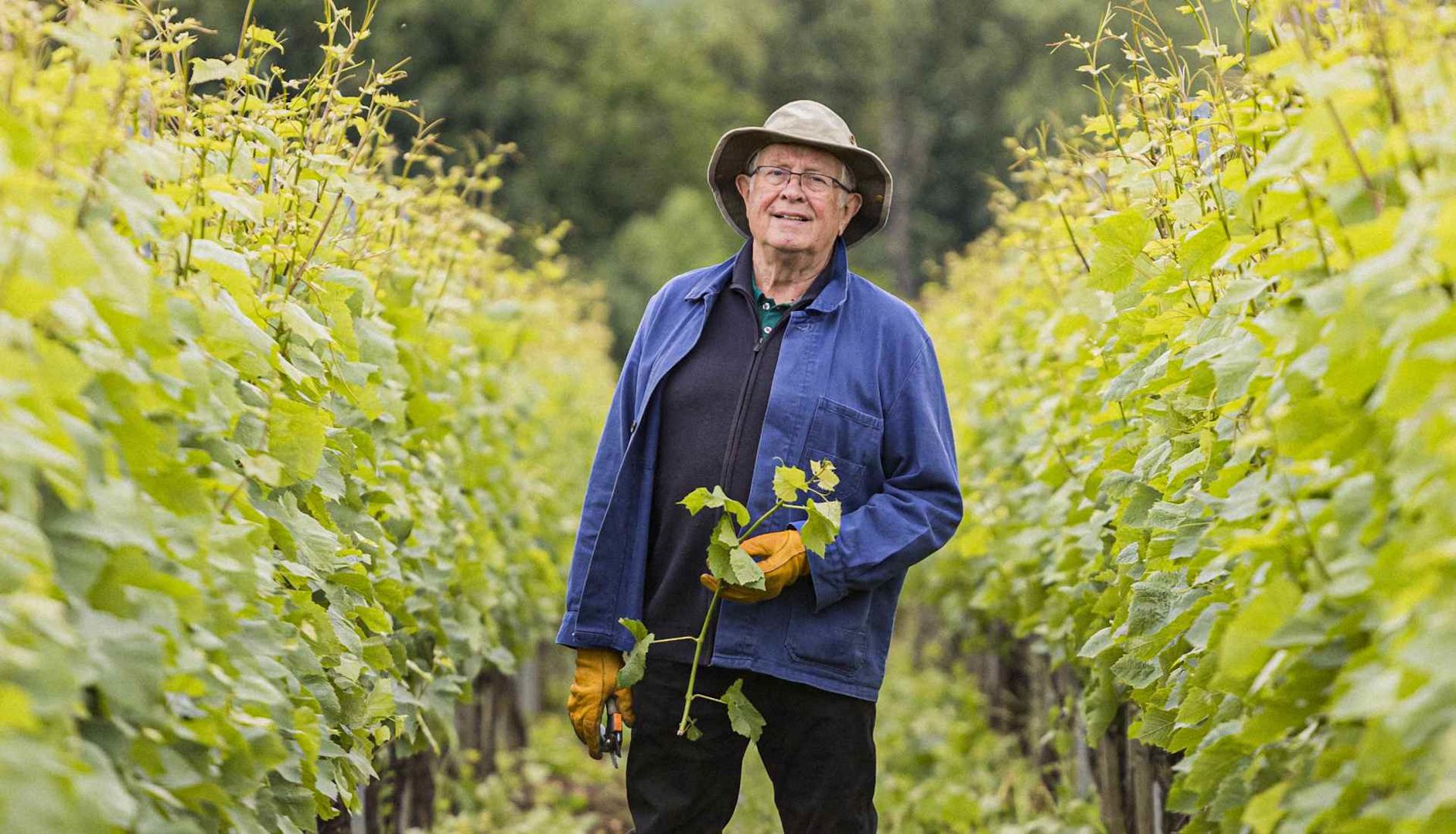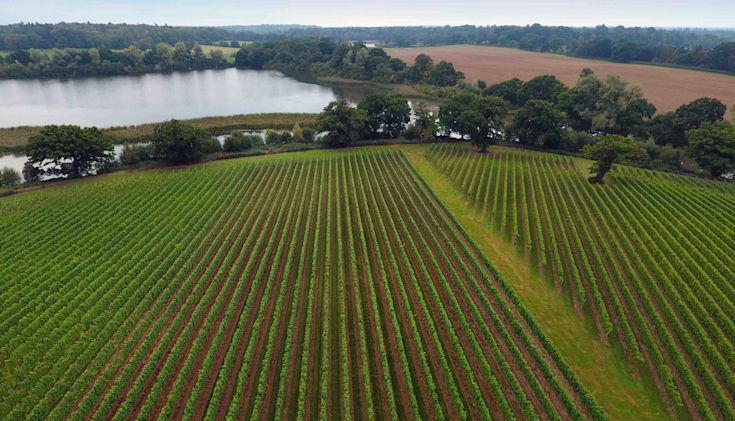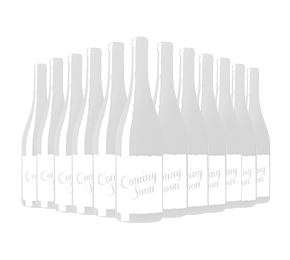Chat with Vinny
Explore how Windsor Great Park is tackling sustainability in winemaker – and join us at the Royal Windsor Flower Show to taste the wines and meet the team.
We’re delighted to be the official wine partner of the Royal Windsor Flower Show this June, an association whose values firmly align with our own. Top of that list is working sustainably, with a deep connection to nature. It also embraces, enthusiastically, collaborating with the wonderful and diverse communities around us.
You will find no better example than right here at Windsor Great Park Vineyard, a small site nestled behind Mezell Hill. This 4-hectare plot, planted in 2011 with the classic Champagne varieties of Chardonnay, Pinot Noir and Meunier, revives the near 1000-year-old history of vines on the Royal Windsor estate.
We’ll be running a number of Tasting Sessions at the Show, so you can experience the delicious sparkling wines of this beautiful vineyard yourself and hear the stories and sustainable techniques behind these award-winning English Quality Sparkling Wines.
Secure your tickets to one of the events.
Visit our stand at the Show and see what steps we are taking, in partnership with two local charities, upcycling some of our wine waste. You’ll be amazed at the wonderful range of items that can be crafted from wooden wine boxes!

Sustainability in Winemaking
As part of our company ethos, we’ve employed a very sustainable approach at Windsor Great Park from the start. That is both in the vineyard and in the winemaking. Discover below the measures being taken by growers and winemakers – from grape to glass – to play their part in reducing their impact on the planet.
We look at what initiatives are being made in the vineyards, the cellars, packaging and transportation to reduce the carbon footprint of a bottle of wine on its journey to you. And close to home, we look at the vineyard at Windsor Great Park and the exciting, sustainable methods they are employing.
Climate change is a major challenge today for all farmers, including grape growers. We’ve all heard about it – greater extremes of weather from long periods of high temperatures, drought, to devastating floods, hail storms and wild fires. Regions that used to enjoy a very predictable weather pattern during the growing season can no longer rely on it.
Being on the climate change frontline, winemakers are increasingly aware of the action they must take not only to adapt, but also to limit their contribution to the problem. We take a look at how can the wine sector become part of the solution.
In the Vineyard
Here’s a brief summary of the different approaches growers and wine estates are taking in the vineyard.
Organic viticulture
Soil health is key to viticulture – a strong vine is a healthy vine, more able to fight off disease and to deal with drought. To this end, some farmers go the organic route. The organic movement was started in the 1960s. It was a reaction to industrially made synthetic fertilisers that had been welcomed and used liberally after WW2 in order to produce big, reliable harvests. The rules today for organic viticulture state that only natural products may be used.
Until 2012, organic rules in the EU only covered work in the vineyard. Since then, a framework for what goes on in the cellar has been added. Today, a wine may only be labelled organic if it’s made from the grapes of certified organic vineyards and made at a certified organic winery.
Some wineries use organic methods, but prefer not to pursue organic certification. It is a time-consuming and expensive process, and some choose a less restrictive approach. In a very difficult year, they may opt to spray just once rather than lose the whole year’s crop.

Biodynamic viticulture
Biodynamic viticulture has many things in common with organic thinking, but is a more holistic and, some would say, spiritual approach. It follows the principles of Rudolf Steiner, the father of the movement, and focuses on revitalising the soil in a natural way (a common theme to all), in order to strengthen the vines and make them more disease and drought resistant.
Biodynamic preparations are an important part of the theory. These are added to the compost or used as spray. Some are buried in cow horns in the soil, which may seem a little ‘whacky’ and is where some become sceptical.
Equally important is the gravitational pull of the lunar cycle, which dictates when every biodynamic step is taken. Some of the world’s very finest wines are biodynamic: Felton Road in New Zealand, Domaine de la Vougeraie in Burgundy, Zind-Humbrecht, Alsace, Nicolas Joly and Gaston Huët in the Loire to name just a handful.
Regenerative viticulture
Regenerative viticulture is the biggest buzz at the moment. Its three main principles are: soil health, biodiversity and carbon capture – elements that are important to organic and biodynamic ways of thinking too. Regenerative viticulture, however, has no specific rules and is more open to interpretation.
The clearest way to describe this is a visit to Windsor Great Park Vineyard where you’ll see regenerative viticulture in action – they are strong advocates of the methods. They work with nature to overcome problems in the vineyard.
Cover crops, biodiversity and avoiding soil compaction
About 20 years back, vignerons would pride themselves on neat, tidy vineyards – no weeds or grass between the rows or below the vines and nicely tilled earth littered with stones perhaps. That has all changed.
Today, no till is very much in fashion. It’s firmly believed that this helps retain maximum carbon in the soil. To help aerate the soil, growers instead plant long-rooted crops like moulis radish and chicory to do the job.
Cover crops are also used to prevent soil erosion and help water retention, plus, very importantly they feed nutrients to the soil, including nitrogen. To this end, the Vineyard Manager at Windsor Great Park, Matt Robson, is drilling in perennials and adding annuals to that – a panoply of borage, linseed, clovers, sunflowers, dycon radish and long-rooted chicory. The higher the growth of the cover crop, the deeper the roots will be … great for decompaction of the soil.
But that’s not the only way to avoid compaction. At Windsor Great Park Vineyard they have now attached caterpillar tracks to their tractor to spread the load more evenly and avoid compaction. It also means the tractor can tackle steeper angles in wet, muddy conditions.
At other estates, they use a shire horse to do the work. These magnificent animals are heavy, but the animal’s tread is way lighter than a conventional tractor. At our own Château La Clarière estate in Bordeaux, we use the shire horse for one particular vineyard.
The proof of success is as simple as the number of worms you find in a spadeful of soil … today, at Windsor, the number has increased 10-fold in the last three years as the new vineyard team (Matt) took charge.
He’s very keen on flowers too – they are important to attract pollinators which, in turn, can also see off unwanted insects.
Composting
From all those cover crops listed above, Matt also gets a considerable amount of biomass (cuttings) from which he can make a green manure or compost to feed back to the vineyard. Lots of great nutrients from nature and a great way to store carbon in the soil.
Biochar
Other biomass, like vine cuttings and foliage, can be used to make a substance called biochar. This employs the ancient method of pyrolysis – burning vine cuttings and such with limited oxygen to produce a stable, carbon-rich material, that improves soil health, aids water retention and feeds nutrients to the soil.
Windsor Vineyard used it for the first time in 2024, buying in two cubic metres and scattering it thinly across the slope. If the results are good, they may invest in a biochar kiln and start making it themselves at Windsor. At Norrel Robertson’s vineyards in Spain’s Calatayud they have done just that and are very pleased with the results.
Collectively, these approaches have the potential to lock carbon in the soil, turning vineyards from carbon sources to carbon sinks.
Biodiversity is also key to sustainability and something they are working hard on at Windsor Great Park Vineyard. Just last year they planted fruit trees – fig, pear and apple – plus all the different flowers and cover crops mentioned above. They help to attract more insects (the good ones), birds, bugs, funghi, worms ... all of which encourages greater microbiological life – biodiversity – in the soil. That in turn produces stronger, more disease-resistant vines. It’s what the world is currently talking about in every agricultural sphere.
Into the cellar
In the cellar, conscientious winemakers are working hard to cut their use of water and fossil-fuel-generated power. Solar panels are a great way of reducing a winery’s carbon footprint and we have a winery in Australia that is 97% solar-powered, with 3% from renewable sources.
In England, it’s rare for irrigation to be needed, but around the world, growers are trying to be more targeted to reduce water consumption.
Other wineries are going the extra mile to capture rainwater from the roof, filter and sterilise it, then use in the winery, treat it again and use in the vineyard. All in the pursuit of a lighter tread on the planet.

Packaging
Glass accounts for around 40% of the carbon footprint of a bottle of wine. Many companies have signed the Sustainable Wine Roundtable’s Bottle Weight Accord, which aims to reduce the average bottle weight down from 550g to 420g by 2026.
In 2020/21 Laithwaites’ average bottle weight was 474g, still 14% lower than the industry average of 550g. Now we’ve tried bottles as low as 300g, with no increase in breakages. Today, 65% of Laithwaites’ wine is in bottles weighing 420g or less.
Meanwhile we are also using non-glass packaging options, which will reduce carbon from both packaging and transportation. These include cartons (such as Tetra Pak), Paper Bottles with a recyclable plastic inner pouch (like a mini bag in box); and 2-litre and 3-litre wine boxes.
Plus, of course, lighter bottles. It all makes a difference.
How we are encouraging green initiatives as a company
Laithwaites is working to reduce carbon and waste in its own operations, but we know that most impacts are within the supply chain. To this end, we are supporting our suppliers to better understand these impacts. Our new online carbon calculator (WinePact) allows producers to track emissions and report a suite of environmental sustainability KPIs. It is early days for WinePact, but the tool has already received recognition, winning ‘Best Logistics and supply chain green initiative’ from Drinks Business Green Awards 2024.
About the author
Nikki Jacoby
Nikki has spent all her career in wine, selling it first by the spoken word, then as a writer in the publishing world, before returning to work within the Laithwaites’ copy team for most of the last 30 years. Many years ago, she passed both halves of the diploma, but the greatest education in wine has been a full immersion in it, visiting the places and talking to its many passionate producers. As a topic, it will never cease to fascinate.

